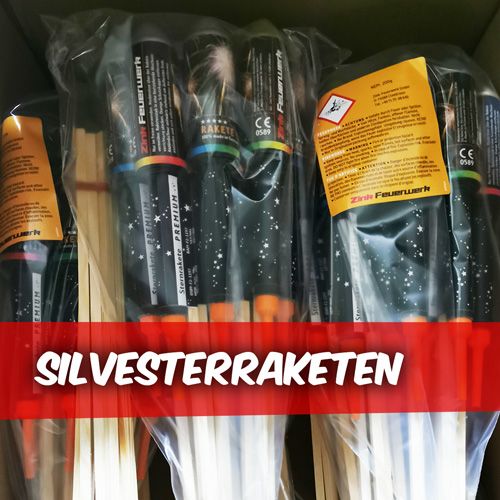Fireworks have long been a symbol of celebration and awe, captivating audiences with their brilliant displays of color and sound. But the history of fireworks is as explosive as the displays themselves, spanning continents and centuries. This article delves into the rich historical tapestry of fireworks, exploring how they evolved from ancient times to the dazzling spectacles we enjoy today.
The Birth of Fireworks in Ancient China
The story of fireworks begins in ancient China, around 200 B.C., when the first primitive fireworks were created by accident. Legend has it that a Chinese cook mixed together sulfur, charcoal, and potassium nitrate—common kitchen ingredients at the time—and the mixture exploded when compressed in a bamboo tube. This rudimentary invention laid the foundation for what would become the modern firework. Over time, the Chinese refined their techniques, using gunpowder to create firecrackers that were used in religious ceremonies to ward off evil spirits.
The Spread of Fireworks Across the World
The knowledge of gunpowder and fireworks spread from China to the Middle East and Europe through trade routes like the Silk Road. By the 13th century, fireworks had reached Europe, where they were embraced by royalty and the nobility. The Italians, in particular, became known for their elaborate fireworks displays, incorporating them into public celebrations and festivals. Fireworks were used to mark significant events, such as coronations, military victories, and religious holidays, becoming a symbol of power and prestige.
Fireworks in America: A Symbol of Freedom
Fireworks have played a central role in American history as well. The first recorded use of fireworks in America was in 1608, in Jamestown, Virginia. However, it was not until the Fourth of July, 1777, that fireworks became synonymous with American Independence Day celebrations. John Adams, one of the Founding Fathers, envisioned fireworks as a way to celebrate the birth of the nation, and the tradition has continued to this day. Each year, millions of Americans gather to watch fireworks light up the sky, symbolizing freedom and patriotism.
The Science Behind Fireworks: A Symphony of Chemistry
The spectacle of fireworks is not just a visual treat; it’s also a fascinating display of chemistry in action. The vibrant colors and patterns that light up the sky are the result of complex chemical reactions. Fireworks are composed of various chemicals, each responsible for a different aspect of the display. For example, strontium salts produce red hues, while barium salts create green colors. The brilliant blues are created by copper compounds, and the bright whites and yellows come from sodium and magnesium.
The Role of Oxidizers and Fuels
At the heart of every firework is a combination of oxidizers and fuels. The oxidizer provides the oxygen needed for combustion, while the fuel burns to produce heat, light, and sound. When a firework is ignited, the oxidizer and fuel react, releasing gases that rapidly expand, causing the firework to explode. This explosion propels the firework into the air, where it bursts into a dazzling array of colors and shapes.
Innovations in Fireworks Technology
In recent years, advancements in technology have led to the development of more sophisticated and safer fireworks. Computer-controlled pyrotechnics allow for more precise timing and coordination of fireworks displays, creating intricate designs and patterns in the sky. Innovations such as low-smoke fireworks, which produce less pollution, are becoming more popular, offering a more environmentally friendly option for large-scale events.
Types of Fireworks: A World of Variety
Fireworks come in a wide range of types, each offering its unique visual effect. Some of the most popular types include aerial shells, Roman candles, fountains, and sparklers. Aerial shells are the classic fireworks that burst into colorful patterns high in the sky, while Roman candles shoot out a series of stars or shells. Fountains produce a shower of sparks that can reach heights of several feet, and sparklers are handheld fireworks that emit a bright, crackling light.
Unique Fireworks Around the World
Different cultures have developed their own unique types of fireworks. For example, in Japan, “Hanabi” fireworks are known for their beauty and precision. These fireworks are meticulously crafted to create perfect, symmetrical shapes in the sky, often resembling flowers. In contrast, India’s Diwali festival features “chakras” and “flowerpots,” which spin and spray colorful sparks. Each type of firework offers a different experience, reflecting the cultural significance and traditions of the region.
Fireworks Safety: Tips for a Safe Celebration
While fireworks are a source of joy and celebration, they can also be dangerous if not handled properly. Following safety guidelines is essential to prevent accidents and injuries. Always purchase fireworks from reputable suppliers, such as those you can find when you “Silvesterfeuerwerk kaufen” at Pyrostern, and follow the manufacturer’s instructions. Never attempt to relight a malfunctioning firework, and keep a safe distance from the launch site. It’s also important to wear protective eyewear and ensure that children are supervised at all times.
Environmental Impact of Fireworks: A Growing Concern
The environmental impact of fireworks is an issue that has gained attention in recent years. Traditional fireworks release harmful chemicals and heavy metals into the atmosphere, contributing to air and water pollution. The debris left behind after a fireworks display can also harm wildlife and contaminate natural habitats. In response to these concerns, researchers are developing eco-friendly fireworks that use less harmful chemicals and biodegradable materials. These green alternatives offer a way to enjoy fireworks without compromising the environment.
Choosing High-Quality Fireworks: What to Look For
When selecting fireworks for a celebration, it’s important to choose high-quality products from reputable suppliers. Look for fireworks that meet safety standards and have been tested for performance and reliability. Reputable suppliers, like those offering the option to “Silvesterfeuerwerk kaufen” at Pyrostern, provide detailed descriptions of their products, including the type of effect, duration, and safety precautions. By choosing high-quality fireworks, you can ensure a spectacular and safe celebration.
Conclusion
Fireworks have a long and fascinating history, evolving from ancient Chinese inventions to the elaborate displays we enjoy today. Whether you’re watching a Fourth of July celebration, lighting sparklers at a Diwali festival, or marveling at the precision of Japanese Hanabi, fireworks continue to captivate audiences around the world. By understanding the science, history, and safety behind these dazzling displays, we can appreciate the artistry and innovation that goes into every firework.



